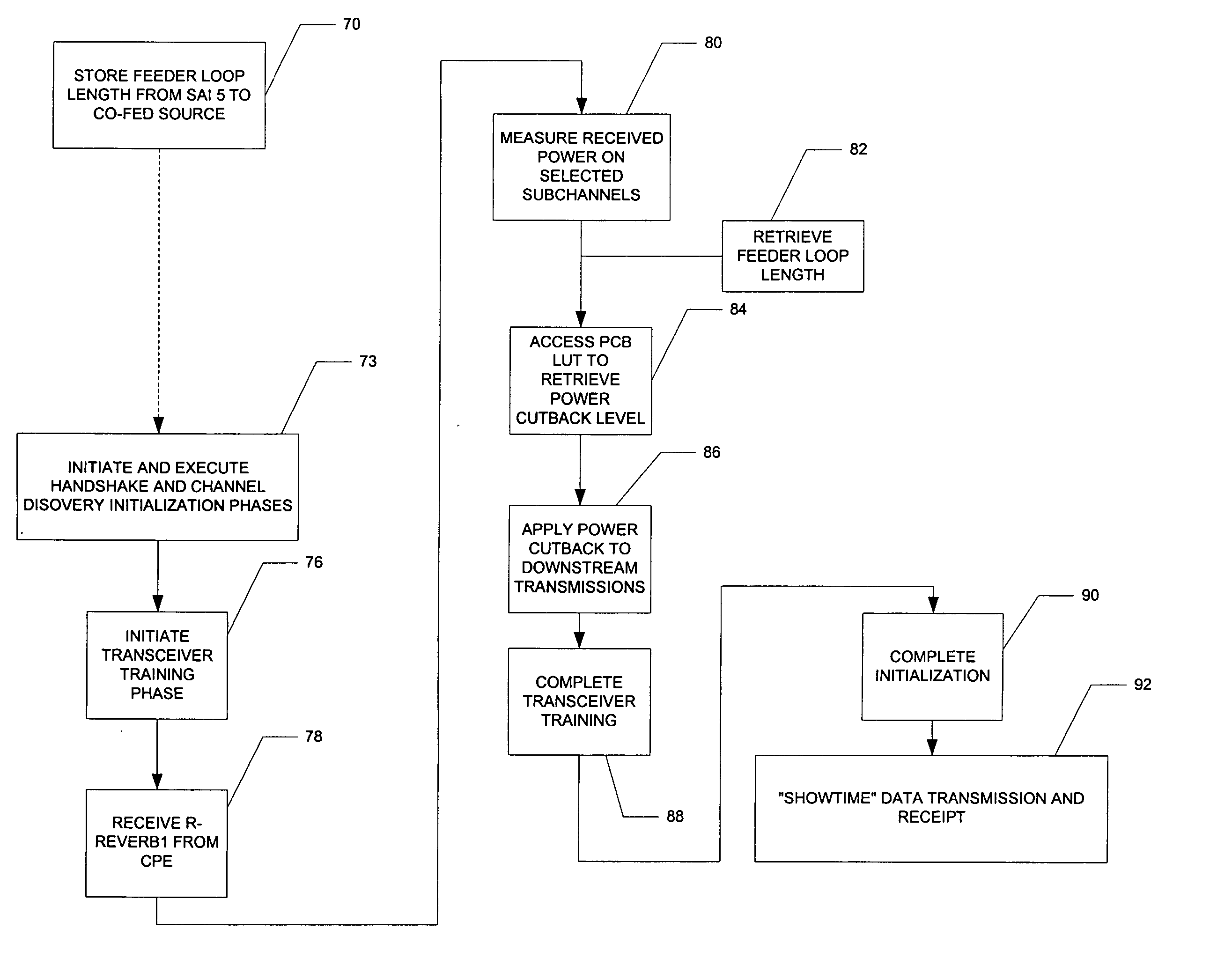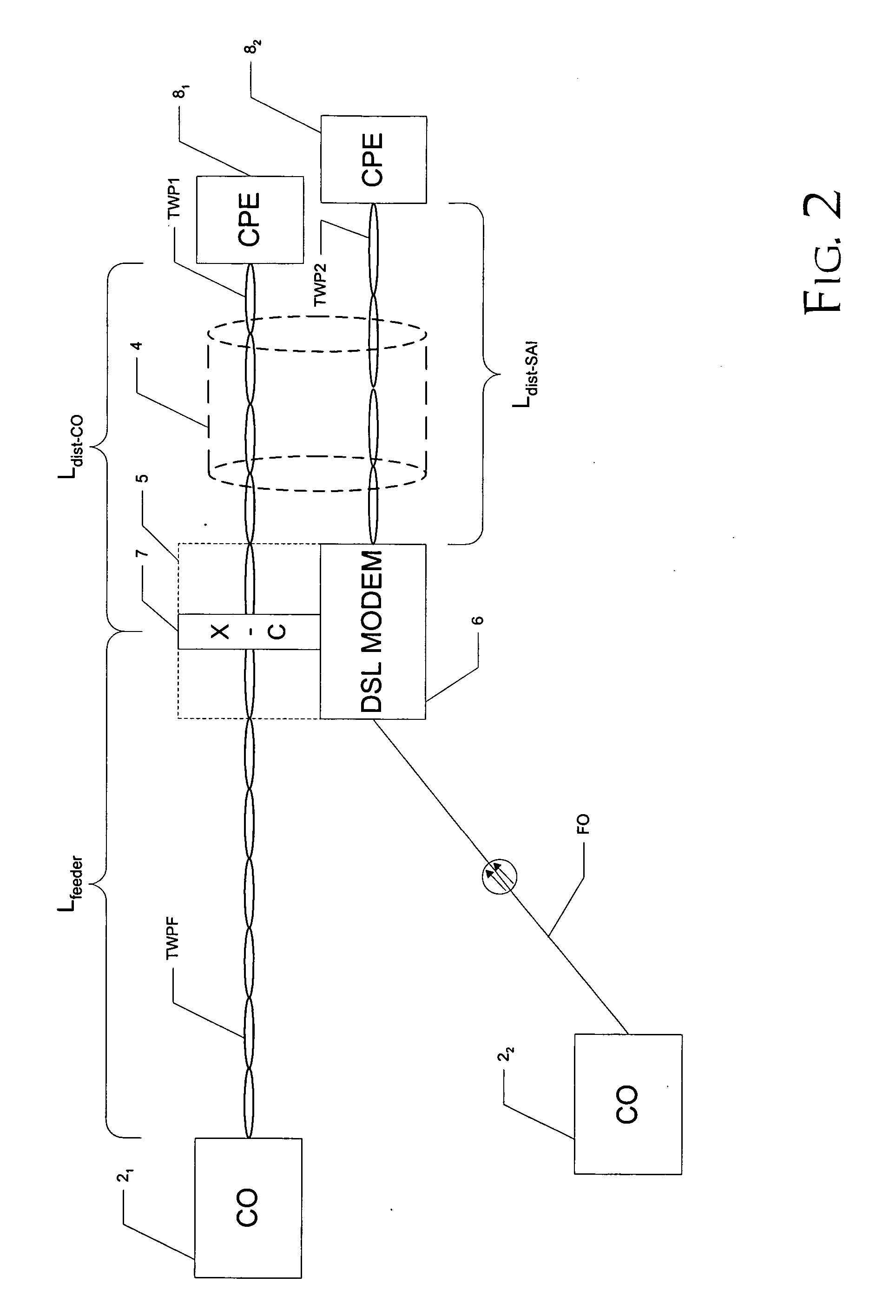Short loop ADSL power spectral density management
a short-loop, power spectrum technology, applied in the field of data communication, can solve the problems of signal crosstalk, power level limitation of communication over a given subscriber loop, and not widely deployed so-called “overlapped mode” of operation, and achieve the effect of reducing the far-end crosstalk
- Summary
- Abstract
- Description
- Claims
- Application Information
AI Technical Summary
Benefits of technology
Problems solved by technology
Method used
Image
Examples
Embodiment Construction
[0038] The present invention will be described in connection with its preferred embodiment, namely as implemented into remote terminal equipment as used in a digital subscriber line (DSL) communications system. However, it is contemplated that this invention may also benefit the performance of other types of communications systems, particularly those in which crosstalk caused by a “near-far” deployment affects the data rate performance. Accordingly, it is to be understood that the following description is provided by way of example only, and is not intended to limit the true scope of this invention as claimed.
[0039]FIG. 2 illustrates an example of a DSL system in which a service area interface (SAI), constructed according to the preferred embodiment of this invention. supports both CO-fed and SAI-fed communications. In this example, central office (CO) 21 communicates with SAI 5 over a conventional twisted-pair wire facility TWPF, having a length Lfeeder, for eventual communication...
PUM
 Login to View More
Login to View More Abstract
Description
Claims
Application Information
 Login to View More
Login to View More - R&D
- Intellectual Property
- Life Sciences
- Materials
- Tech Scout
- Unparalleled Data Quality
- Higher Quality Content
- 60% Fewer Hallucinations
Browse by: Latest US Patents, China's latest patents, Technical Efficacy Thesaurus, Application Domain, Technology Topic, Popular Technical Reports.
© 2025 PatSnap. All rights reserved.Legal|Privacy policy|Modern Slavery Act Transparency Statement|Sitemap|About US| Contact US: help@patsnap.com



